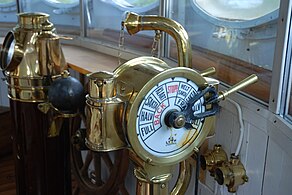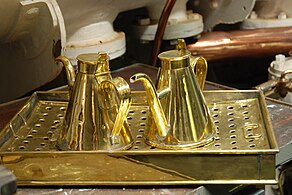
A lightvessel, or lightship, is a ship that acts as a lighthouse. They are used in waters that are too deep or otherwise unsuitable for lighthouse construction. Although some records exist of fire beacons being placed on ships in Roman times, the first modern lightvessel was off the Nore sandbank at the mouth of the River Thames in London, England, placed there by its inventor Robert Hamblin in 1734. The type has become largely obsolete; lighthouses replaced some stations as the construction techniques for lighthouses advanced, while large, automated buoys replaced others.

The Swedish Navy is the naval branch of the Swedish Armed Forces. It is composed of surface and submarine naval units – the Fleet – as well as marine units, the Amphibious Corps.

Skeppsholmen is one of the islands of Stockholm. It is connected with Blasieholmen and Kastellholmen by bridges. It is accessible by foot from Kungsträdgården, past the Grand Hôtel and Nationalmuseum, by bus number 65, or by boat from Slussen, Djurgården or Nybroplan.

The MS Estonia was a cruiseferry built in 1980 for the Finnish company Rederi Ab Sally by Meyer Werft, in Papenburg, West Germany. She was employed on ferry routes between Finland and Sweden by various companies until 1993, when she was sold to Nordström & Thulin for use on Estline's Tallinn–Stockholm route. The ship's sinking on 28 September 1994, in the Baltic Sea between Sweden, Finland and Estonia, was one of the worst peacetime maritime disasters of the 20th century, claiming 852 lives.

The Australian National Maritime Museum (ANMM) is a federally operated maritime museum in Darling Harbour, Sydney. After considering the idea of establishing a maritime museum, the federal government announced that a national maritime museum would be constructed at Darling Harbour, tied into the New South Wales state government's redevelopment of the area for the Australian bicentenary in 1988. The museum building was designed by Philip Cox, and although an opening date of 1988 was initially set, construction delays, cost overruns, and disagreements between the state and federal governments over funding responsibility pushed the opening to 1991.

The Lightship Finngrundet is a lightvessel built in 1903 and now a museum ship moored in Stockholm, Sweden.
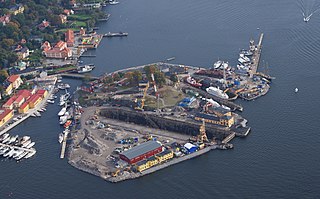
Beckholmen is a small island in central Stockholm, Sweden. Having served the city's shipping industry for centuries, Beckholmen is now regarded as a historical monument of national interest, and, by its location just south of Djurgården in the vicinity of other similar localities it also forms part of Royal National City Park, and Stockholms Sjögård, an area of the harbour of Stockholm containing maritime environments of historical interest.

MS Bore is a combination museum and hotel ship docked permanently in Turku, Finland. She was originally built in 1960 by Oskarshamn shipyard, Oskarshamn, Sweden as the car/passenger ferry SS Bore for Steamship Company Bore, Finland, then the last commercial steam ship built in Scandinavia and the first ferry on the route between Finland and Sweden where cars could drive aboard. She was later known as SS Borea, before being rebuilt as a cruise ship in 1988. 1988 to 2010 she was owned by the Finnish shipping company Kristina Cruises and known as MS Kristina Regina until she was retired because she did not comply with new safety regulations.
The Queensland Maritime Museum is located on the southern bank of the Brisbane River just south of the South Bank Parklands and Queensland Cultural Centre precinct of Brisbane, and close to the Goodwill Bridge.
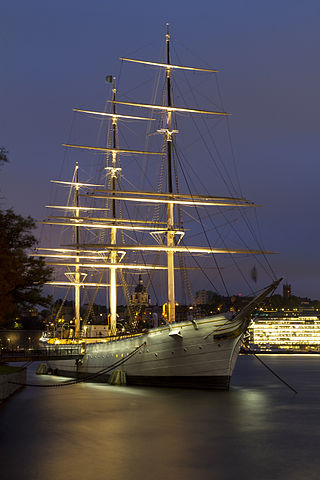
af Chapman, formerly Dunboyne (1888–1915) and G.D. Kennedy (−1923), is a full-rigged steel ship moored on the western shore of the islet Skeppsholmen in central Stockholm, Sweden, now serving as a youth hostel.
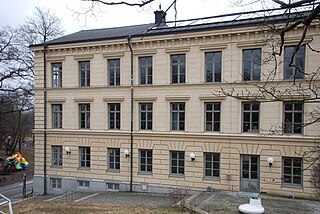
The Nautical Chart Department is a building located on the islet Skeppsholmen in central Stockholm, Sweden.
Herakles was a pusher vessel owned by Finnish towing and marine salvage company Alfons Håkans Oy Ab. The ship, originally built as salvage tug Into in 1967, was converted to a pusher in 1991 to be chartered to Rautaruukki Oyj and later ESL Shipping Ltd as the third pusher vessel for the Finnpusku system, a Finnish integrated tug and barge system built in the mid-80s.

The United States lightship Barnegat (LV-79/WAL-506), is located in Camden, Camden County, New Jersey, United States. The lightship was built in 1904 and was added to the National Register of Historic Places on 29 November 1979.
SS Heidberg was a cargo steamship that was built in 1943 in Sweden for a German shipping company. The Allies in 1945 took it for war reparations. She was renamed Empire Convention, and spent about nine months under United Kingdom ownership and management. In 1946 she was transferred to the Soviet Union, who renamed her Эрнст Те́льман – Ernst Thälmann. Her fate is not recorded.

Suur Tõll is an Estonian steam-powered icebreaker preserved in the Estonian Maritime Museum in Tallinn. She was originally built for the Russian Empire in 1914 by AG Vulcan in Stettin, Germany, as Tsar Mikhail Feodorovich. In 1917, she was taken over by the Bolsheviks and renamed Volynets. However, in 1918 she was captured by Finland and served as Wäinämöinen until 1922, when she was handed over to Estonia according to the Treaty of Tartu and renamed Suur Tõll. When Estonia was occupied by the Soviet Union in 1940, the icebreaker rejoined the Soviet fleet and was again named Volynets. She remained in service until 1985.
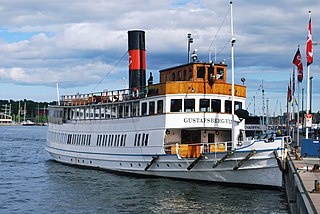
The Gustafsberg VII is a motor vessel, and former steam ship, that was built in 1912 at Oskarshamn. In 1929 she was sold to Waxholmsbolaget. After being written off in a sinking accident in 1964, she was bought by steamship enthusiasts, salvaged and restored. In 1973, Strömma Kanalbolaget bought the ship. She was converted to diesel power in 1985, and is now used for tourist services in the Stockholm archipelago. Over the years, she has also operated under the names Gustavsberg VII and Saxaren.

The National Maritime Museum in Gdańsk is a maritime museum in Gdańsk, Poland, established on 1 January 1962. It is dedicated to gathering, researching and preserving artifacts and documents concerning ship transport, international trade, fishing and culture of people working at sea, rivers and those ashore as well as the dissemination of knowledge on maritime history of Poland and its economy through the ages.
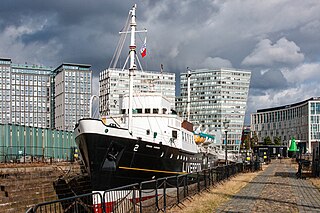
MV Edmund Gardner is a retired pilot cutter built for the Liverpool Pilot Service after the Second World War. She was decommissioned after nearly 30 years service converted to a museum ship as part of the Merseyside Maritime Museum.

The Katarina is a restaurant ship, and former steam ship, that was built in 1869 at Stockholm in Sweden. Sailing under her original name of Fredriksborg on the route through the Stockholm archipelago from Stockholm to Vaxholm, she was the Waxholmsbolaget's first propeller-driven steam ship. After being sold by the Waxholmsbolaget in 1882, she operated in various roles under the names Höganäs, Mariehamn, Stella, Wirumaa, Kullervo and André before acquiring her current name in 1985. Today she is a floating restaurant moored in the Aura river in Turku, Finland.

Lagaren is a historic iron-hulled ship that formerly served as the Swedish lightvessel steamship No. 17 Svinbådan and was subsequently used as a workshop vessel and a schoolship. In 2010 the ship was flagged in the United States and since 2013 has been impounded in Santa Cruz, Tenerife in relation to a drug smuggling case.

